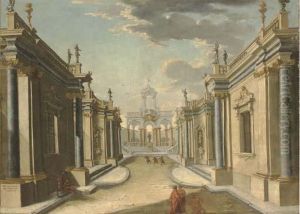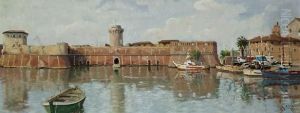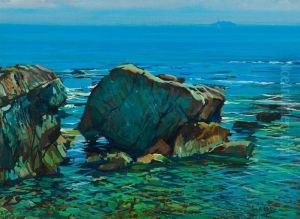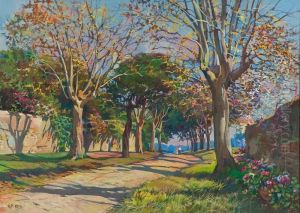Antonio G. Landi Paintings
Antonio José Landi, commonly known as Antonio G. Landi, was an Italian-Brazilian architect and artist, recognized for his significant contribution to the architecture and urbanism of Belém, in the state of Pará, Brazil. Born on October 30, 1713, in Bologna, Italy, Landi was educated in the rich cultural environment of his hometown, which was one of the major centers of the Italian Baroque. He studied at the Academy of Fine Arts of Bologna, where he was exposed to the works of prominent architects such as Vitruvius and Palladio, whose influence can be seen in his later works.
Landi moved to Portugal in the mid-18th century and subsequently relocated to Brazil as part of the group of artists, engineers, and architects brought by the Marquis of Pombal to work on the reconstruction of Lisbon following the 1755 earthquake. However, his most notable work was done after he moved to Belém at the behest of the governor. There, he became an influential figure in the development of the city's architecture, integrating the Baroque style with local traditions and the demands of the tropical climate.
During his time in Brazil, Landi designed several important structures, such as the Church of Santo Alexandre and the Palácio do Governo (Government Palace), which are considered prime examples of colonial architecture in Northern Brazil. His designs often featured elements adapted to the local climate, such as large windows and verandas to facilitate ventilation. Landi was also a professor of geometry and architecture, passing on his knowledge and style to future generations of Brazilian architects.
Landi's contribution extended beyond architecture. He was an accomplished painter and naturalist, and his work in mapping and studying the Amazon region was important for the scientific community of his time. He was one of the first to undertake systematic studies of the Amazon River and its surroundings, contributing to the cultural and natural history of Brazil.
Antonio José Landi died on January 23, 1791, in Belém. His legacy lives on in the city's historic district, where his architectural style continues to be admired and preserved. Landi's integration of European Baroque with Brazilian elements created a unique architectural vernacular that remains an important part of Brazil's cultural heritage.




